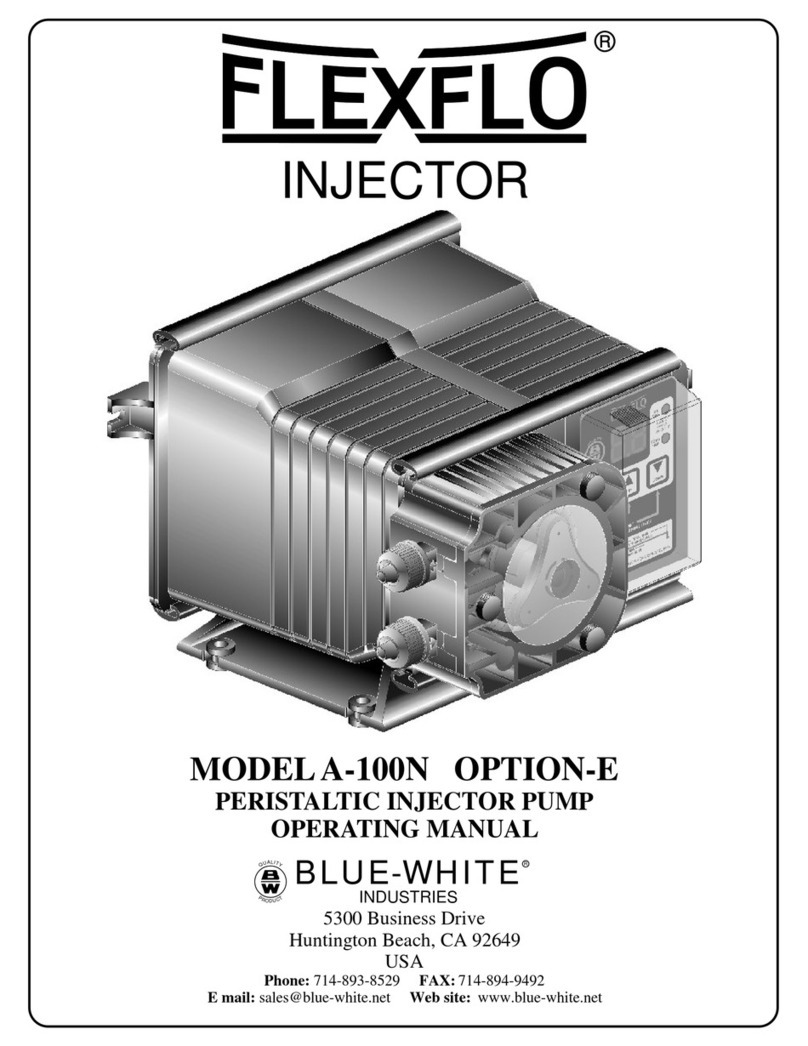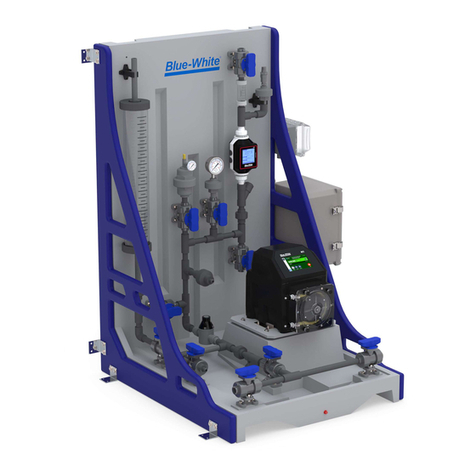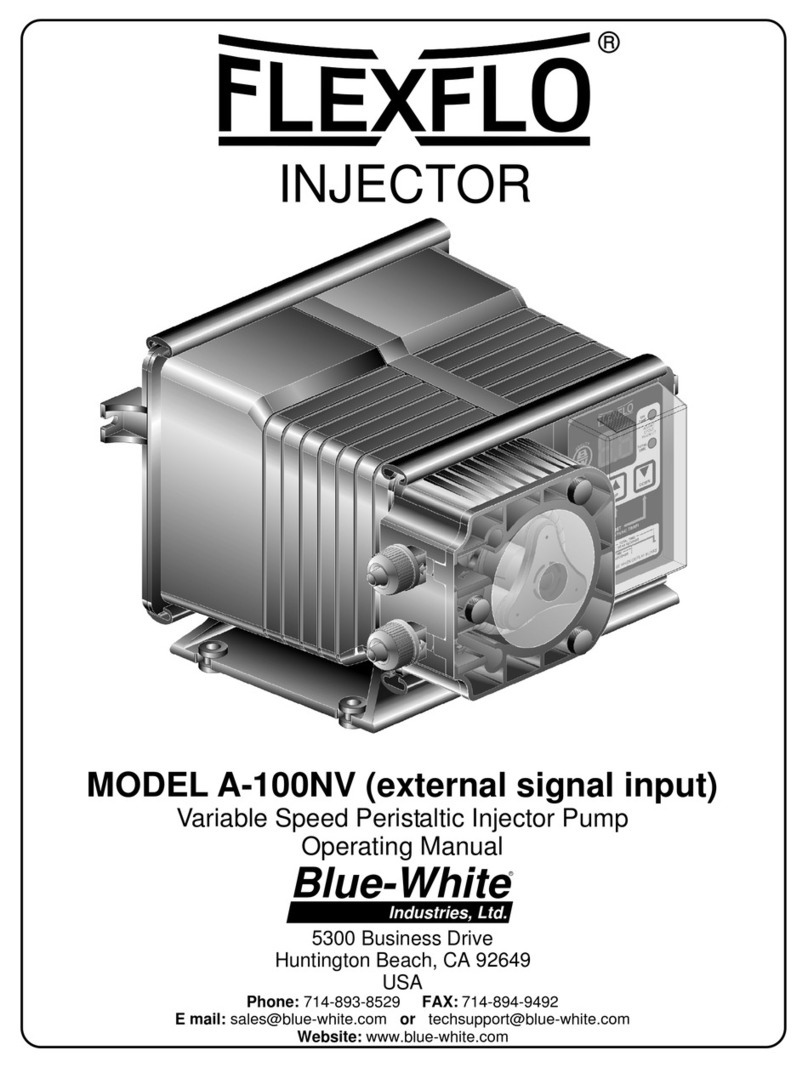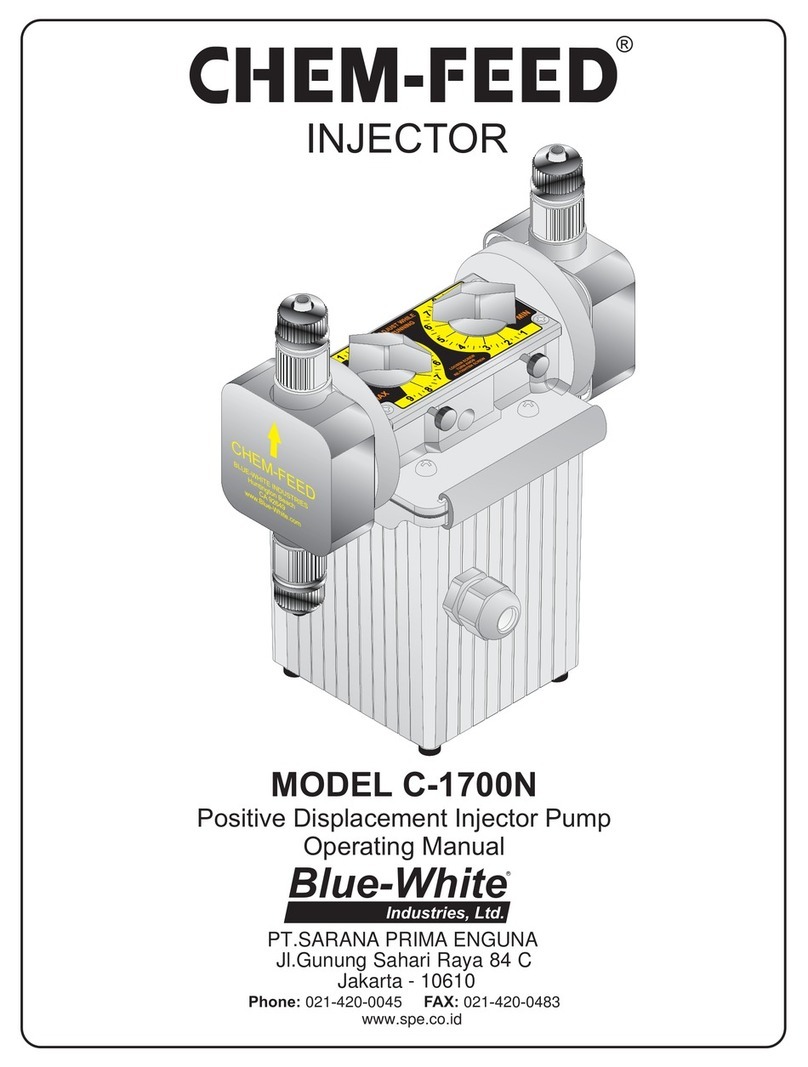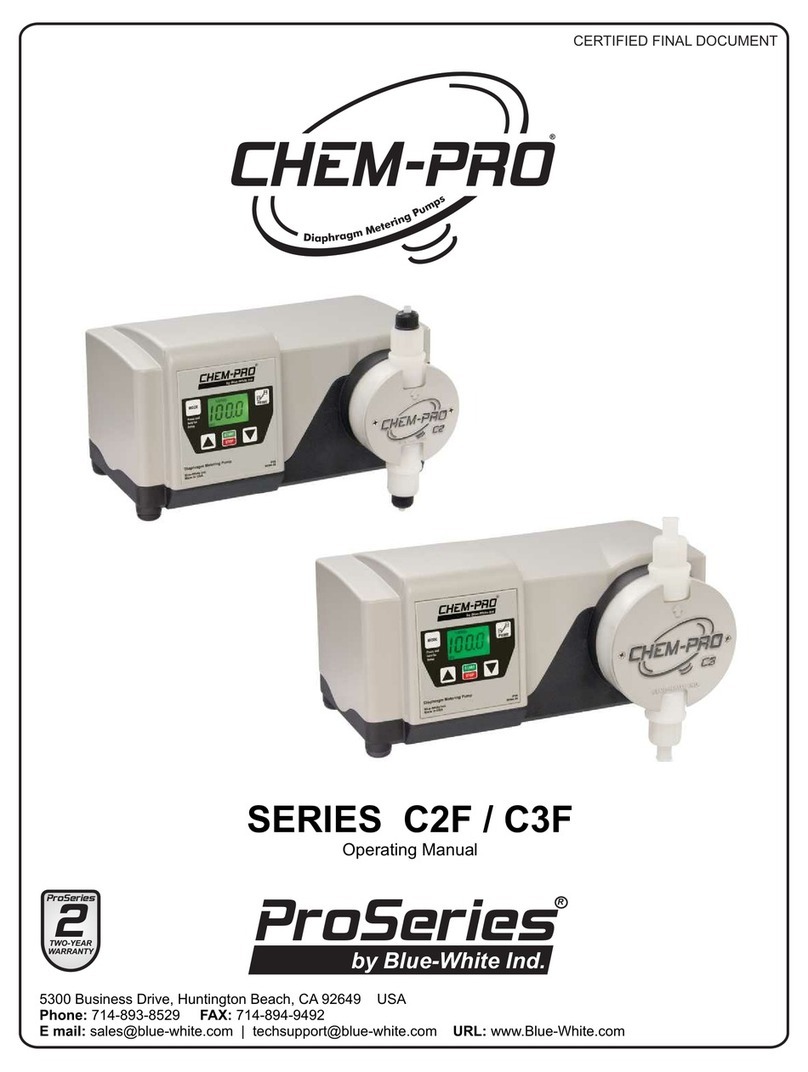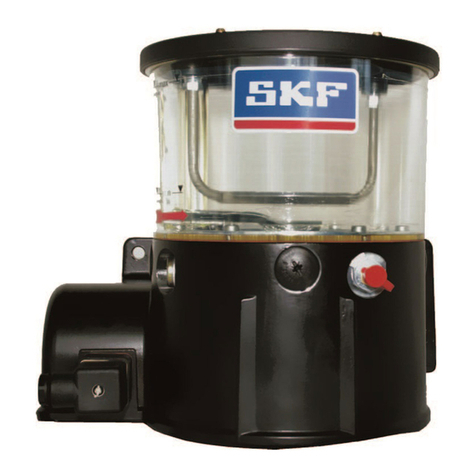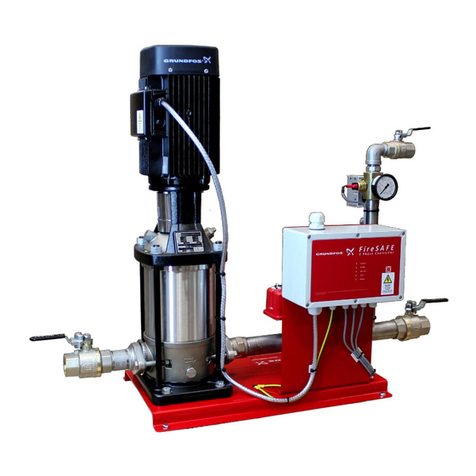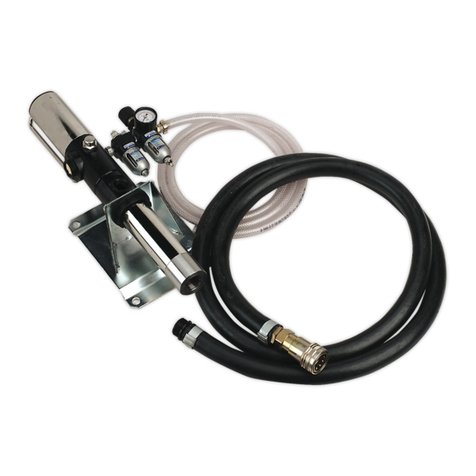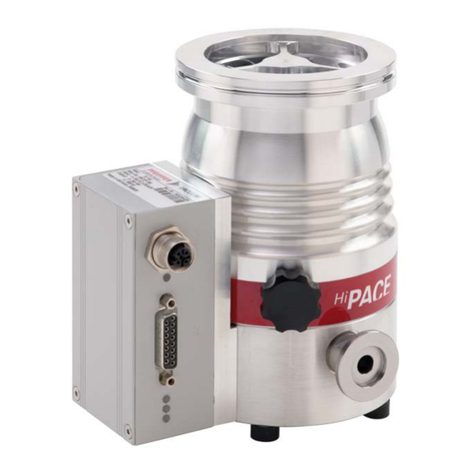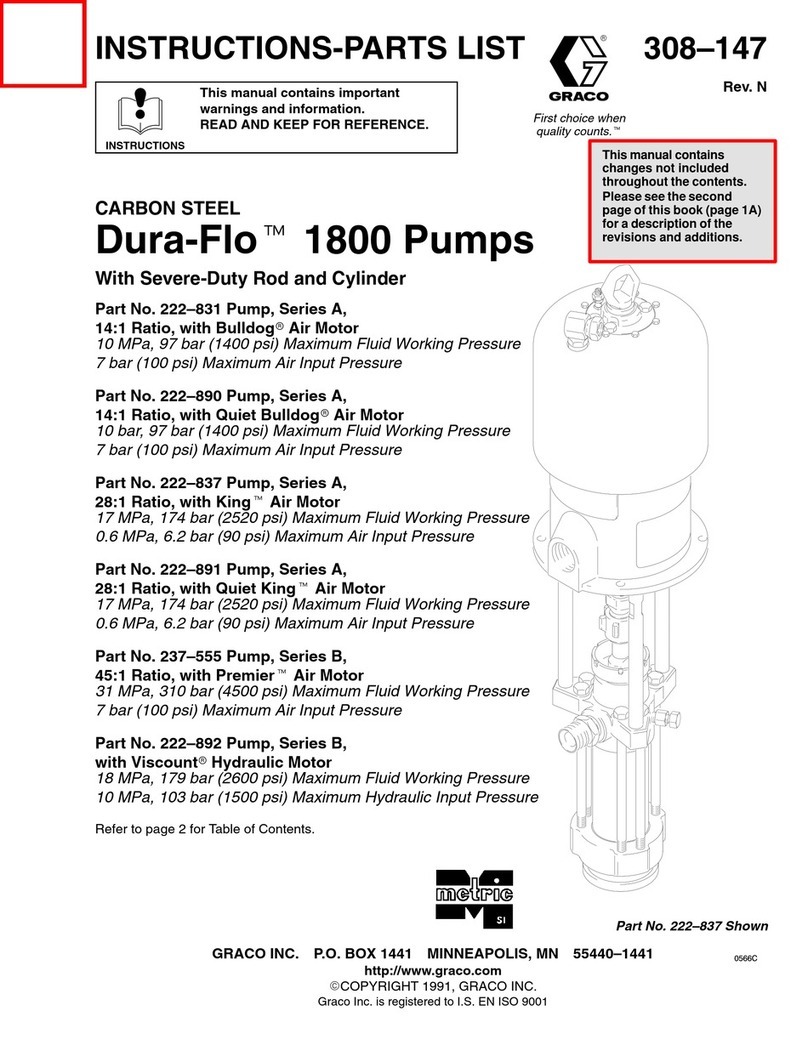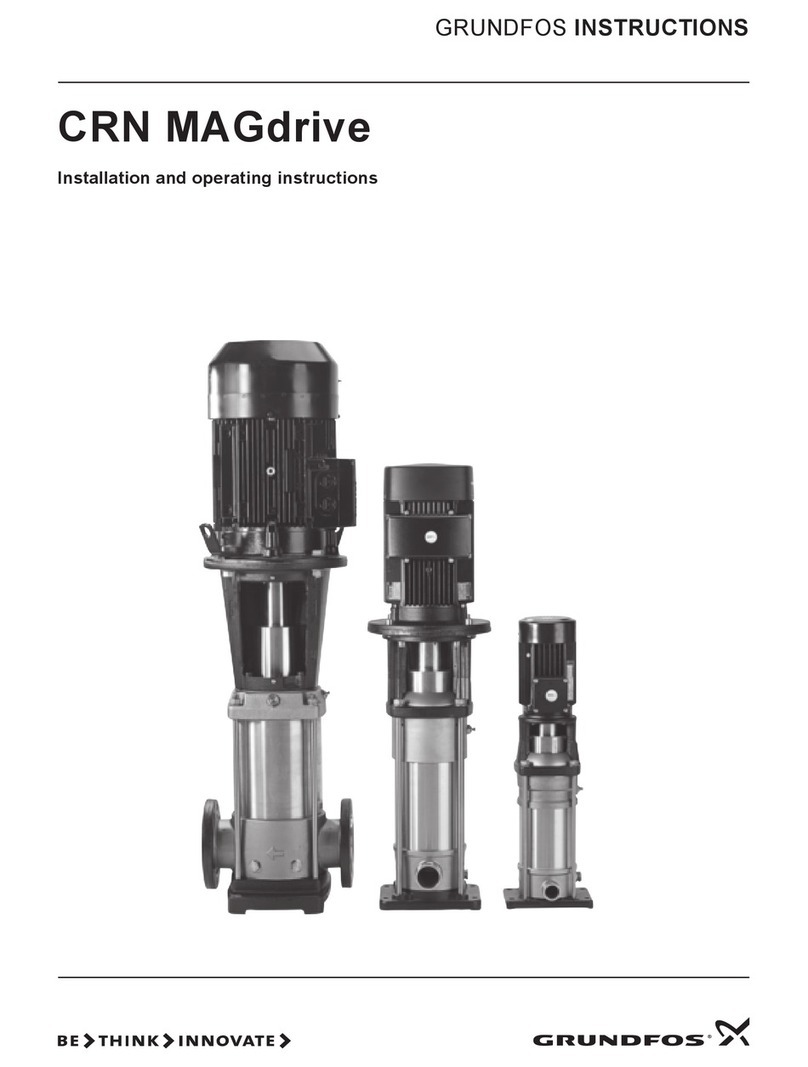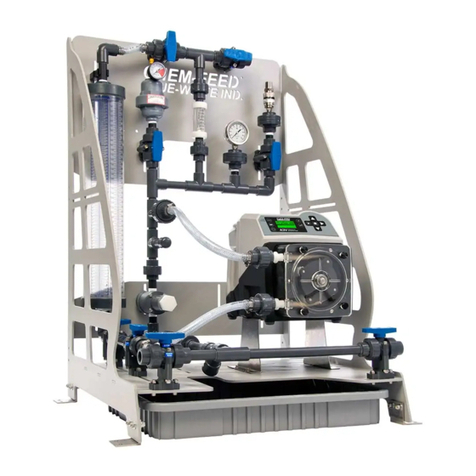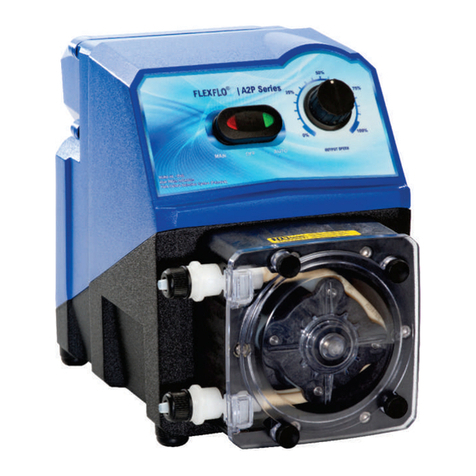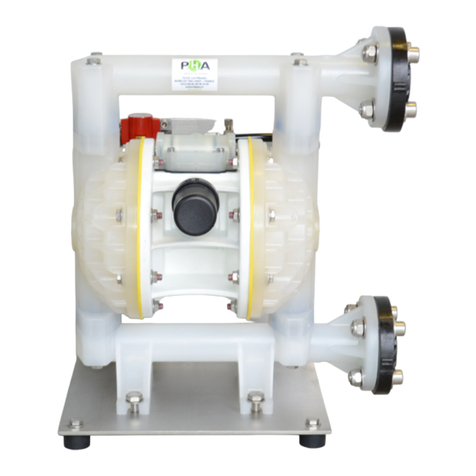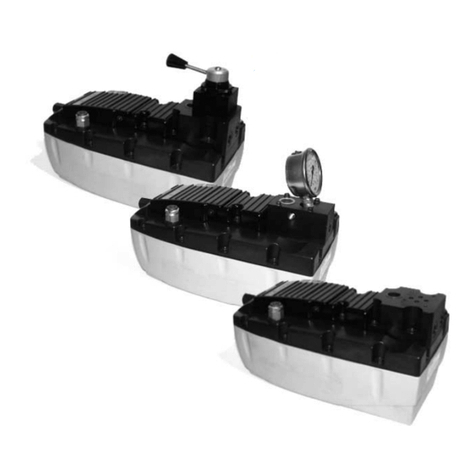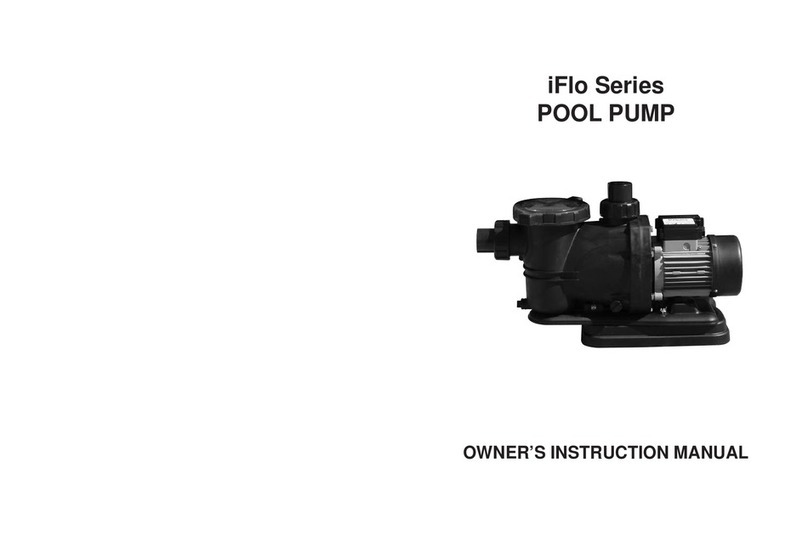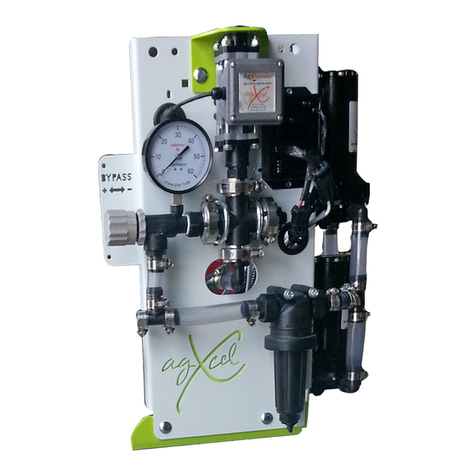
Page 18
10.0 PUMP MAINTENANCE
10.1 Routine Inspection and Maintenance
The pump requires minimal maintenance. However, the pump and all the accessories should be checked weekly,
especially when pumping chemicals. Inspect all the components for signs of leaking, swelling, cracking,
discoloration, or corrosion. Immediately replace worn out or damaged components.
Cracking, crazing, or discoloration during the first week of operation are signs of a severe chemical attack. If this
occurs, perform the following steps:
1. Immediately remove the chemical from the pump.
2. Determine which parts are being attacked.
3. Replace the damaged parts with parts that have been manufactured using more suitable materials.
4. After servicing, operate the pump to verify normal operation.
NOTE: The manufacturer does not assume responsibility for damage to a pump that has been caused by a
chemical attack.
10.2 Cleaning and Lubricating the Pump
> The pump will require occasional cleaning, and it will depend on the severity of service.
> When changing the pump tube assembly, the pump head chamber, the roller assembly, and the pump head
cover should be wiped of any dirt and debris.
> Clean the motor shaft with a clean towel, and then apply a small amount of grease to the shaft. This will help
prevent the rotor from sticking to the motor shaft.
> Periodically, or when necessary, grease the pump head cover bearing. Apply a small amount of grease
(Aeroshell aviation grease #5 or equivalent).
> 100% silicone lubrication may be used on the roller assembly.
> Periodically clean the injection fitting /check valve assembly, especially since injecting fluids, like sodium
hypochlorite, can calcify. These lime deposits and other buildups can clog the fitting, increase back pressure,
and interfere with the check valve operation.
> Periodically clean the suction strainer.
®
FlexFlo A1A Page 19
The pump tube assembly will eventually become non-operational if it is not regularly inspected and replaced. The
tube life is affected by many factors, such as the type of chemical being pumped, the amount of back pressure,
the motor revolutions per minute (RPM), and temperature.
11.0 TUBE REPLACEMENT
®
FlexFlo A1A
11.2 Tube Removal
1. Disconnect the system plumbing from the pump
tube adapters.
2. Press the Start & Stop key to stop the pump.
3. Remove the three black thumb screws from the
front of the pump head cover by unscrewing
counterclockwise. Remove the pump head cover by
pulling straight out.
Always wear protective clothing, face shield, safety glasses and gloves when working on or
near your metering pump. Additional precautions should be taken depending on solution
being pumped. Refer to MSDS precautions from your solution supplier.
!
CAUTION
Use extreme caution when replacing the pump tube. Do not place your fingers near the
rollers.
!
CAUTION
Prior to service, pump clean water through the pump and suction / discharge line to remove
any chemical.
Always wear protective clothing, face shield, safety glasses and gloves when working on or
near your metering pump. Additional precautions should be taken depending on solution
being pumped. Refer to MSDS precautions from your solution supplier.
Use the provided Tube Installation Tool to leverage tubing into the pump head. Do not use
your fingers.
!
CAUTION
!
CAUTION
!
CAUTION
Safety first. Remove the pressure. Relieve (remove) the system pressure on the
discharge and suction side of the pump. Failure to do so will cause the solution to squirt
when disconnecting the tube connections.
!
CAUTION
11.1 Provided Tool
Tube Installation Tool
90002-278





















